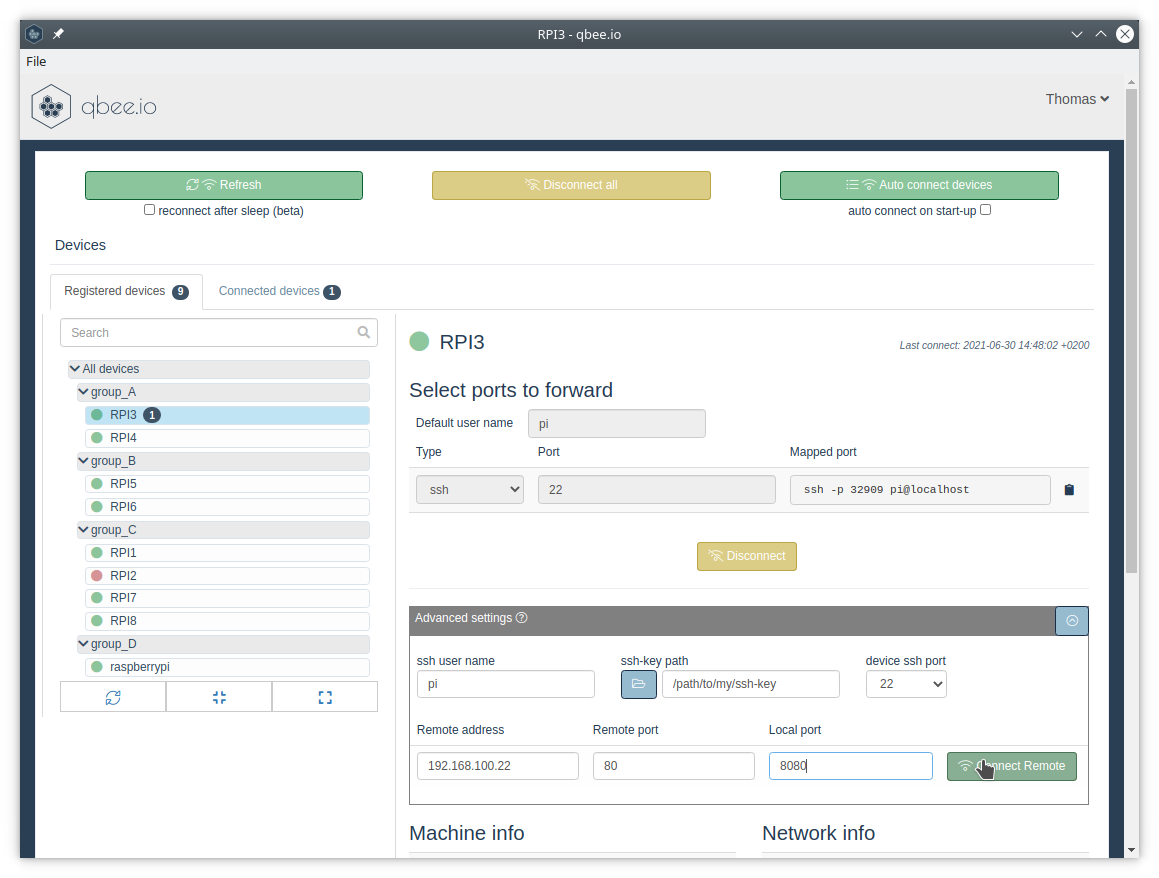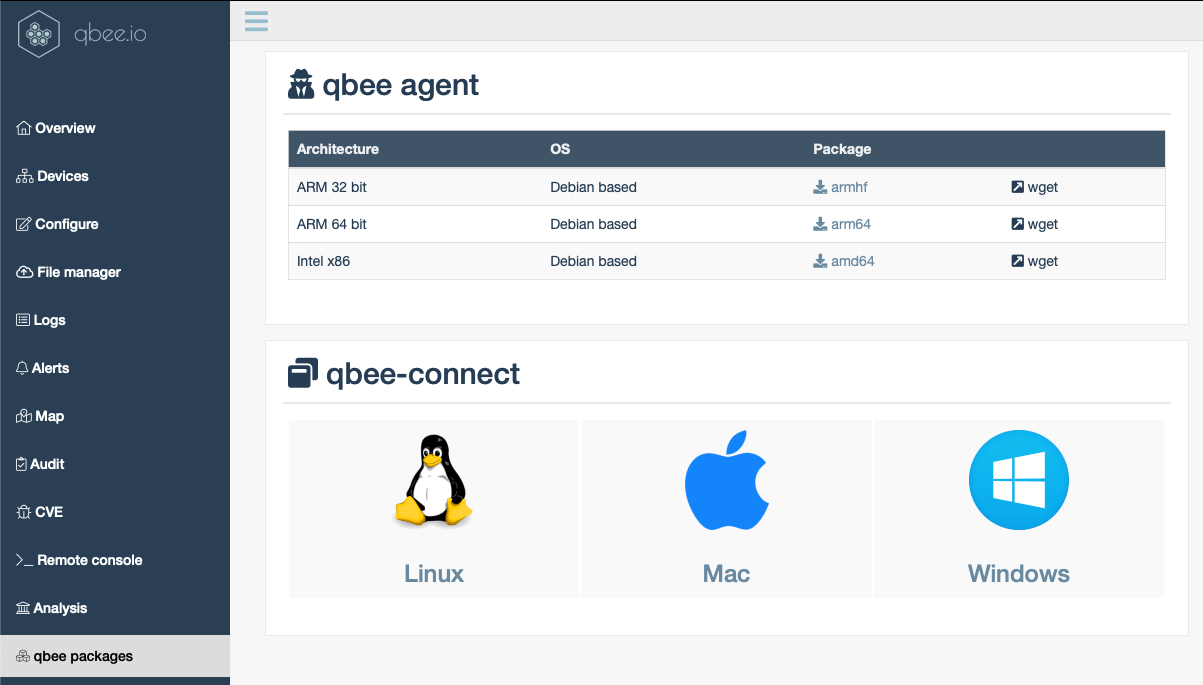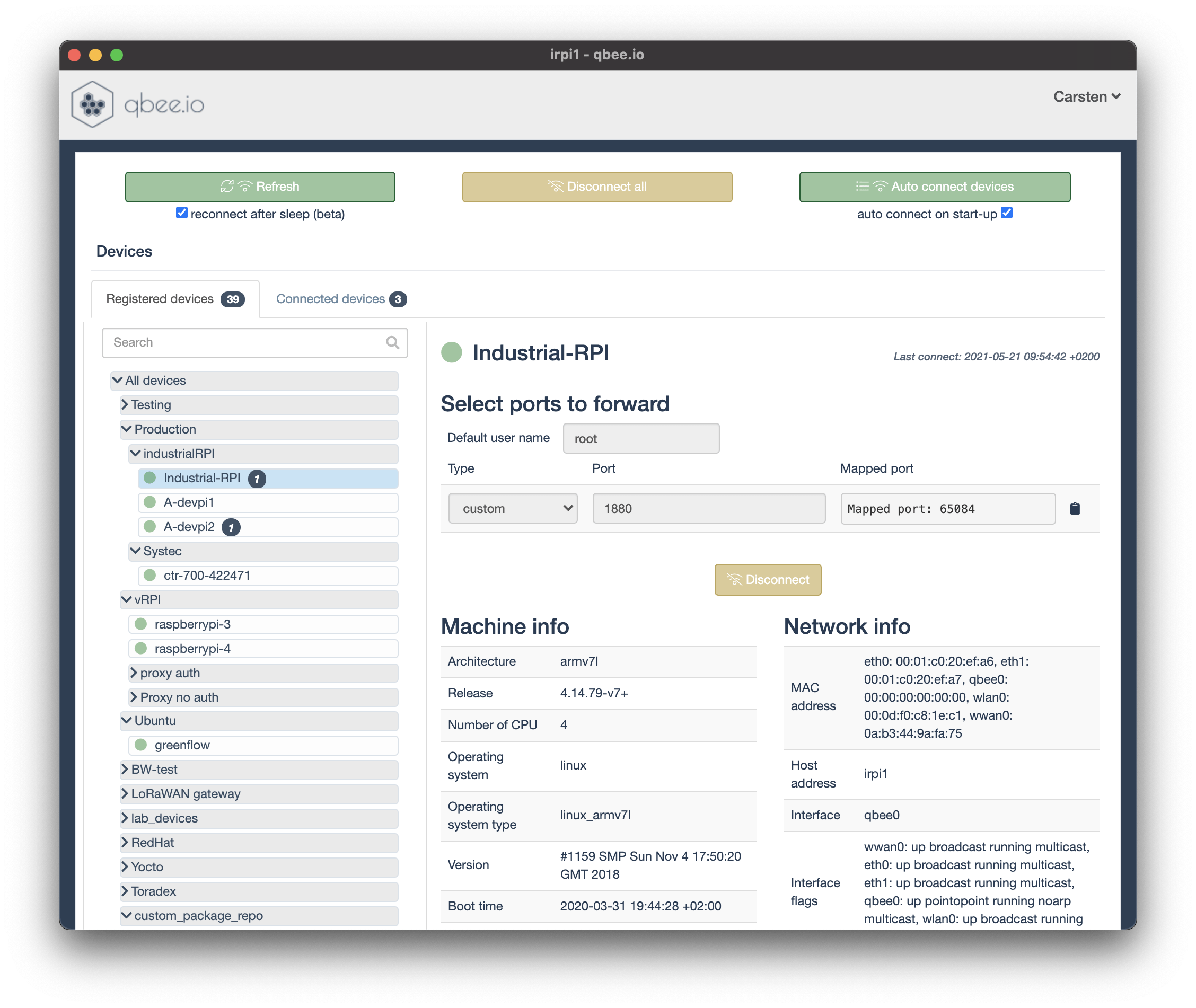A simple question deserves a simple answer. Is qbee a good Teamviewer IoT alternative?
For remote devices running Linux or embedded Linux qbee is the perfect Teamviewer IoT alternative. We actually provide a much advanced functionality. Please learn more in this article and give us a try by testing our free trial. It takes you less than 5 minutes to setup the Teamviewer IoT alternative qbee on a Raspberry Pi.
Our qbee-connect client connects to your remote target devices. It can run on Windows, Linux and macOS. Thus, the machine accessing the remote devices can use any common operating system. qbee allows to use any remote service on any remote port on the local machine. This sets it apart from any competition like Teamviewer.

qbee.io is a full device management solution for Linux that includes configuration management, remote monitoring, security hardening, OTA software updates and much more.
One specific focus area is secure remote access with an integrated VPN. This is like Teamviewer IoT on steroids.
Here qbee.io competes against Teamviewer IoT. If you compare qbee vs Teamviewer our solution is much more flexible and even easier to setup and operate. We offer a small footprint software for the target device that can basically run on any Linux or embedded Linux even with limited CPU resources or memory available. No Java needed. Our desktop client to access the devices is available for both Windows, Linux and macOS. All this runs out of the box and even complex service mappings are very easy to setup.

So how does this work? The qbee.io agent automatically establishes a secure connection to the qbee cloud application over a standard https port 443. Thus, we can operate across any company firewall or NAT. The qbee-connect desktop client also connects from your local machine via https and port 443 to the cloud. There we securely forward the connection without decoding the TLS layer.
The VPN connection is established between your remote device and your local machine. qbee.io cannot see any content that is transmitted.
qbee-connect is able to map any remote port to a local port on your machine. This way you can map a remote web server to a static localhost (127.0.0.1) address and then open it in your local browser. But this concept is so flexible that you can just as well use this in any other tool or application:
- Remote Desktop with VNC
- Remote web server content via http or https
- File operations with your favourite tool using scp, sftp, rsync or sshfs
- Your own software transmitting on any port
- map other ports from other devices in your remote network (ssh port forwarding)
- standard ssh access with your local terminal
- or even run a remote Minecraft server through this mechanism (we admit that this is not very useful, but you get the idea…)
Another interesting option is that you can dynamically turn the VPN on or off for additional security or with regards to customer specifications. Most of this is functionality that is currently not possible with Teamviewer.
With the latest release we have launched a feature called auto-connect. Through the qbee UI you can specify devices and ports that get automatically mapped any time qbee-connect is launched. This allows to access remote web UIs directly with the launch button in qbee from the web interface. Still the data is only decrypted on your local machine and not available on any obscure link in the web.

Pressing the first launch button will immediately open a remote Node-Red window in a new tab mapping the standard Node-Red port 1880 from the remote host to localhost:65084. From there you can now operate your device remotely. The qbee-connect tool has a few very useful features:
- it enables to auto-connect again after sleep
- it enables to auto-connect the defined ports from the UI on start-up
- you can manually add any device and any port you need and connect this
- you can re-connect all ports if needed
- large number of concurrent connections are possible
- now you can even access other devices in the remote network if they allow that

As a summary we want to highlight that qbee with qbee-connect is extremely flexible, convenient, secure and it uses very few resources on the device. This is a huge advantage when running on embedded IoT devices as it does not fight for resources with the value creating application stack. Just compare us against Teamviewer IoT or others but make sure to have a look at all functionality provided in qbee-connect.
As a last argument we ask you to check out our pricing which is very competitive and then we hope we can welcome you on a free 30 day trial.







